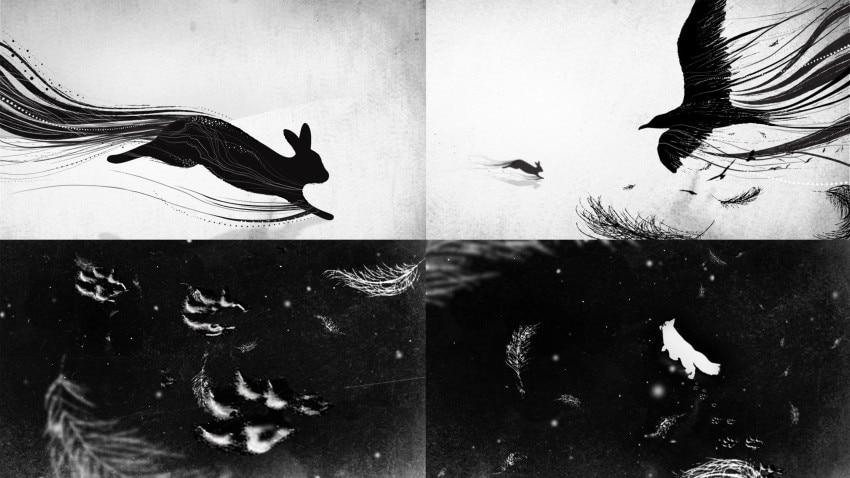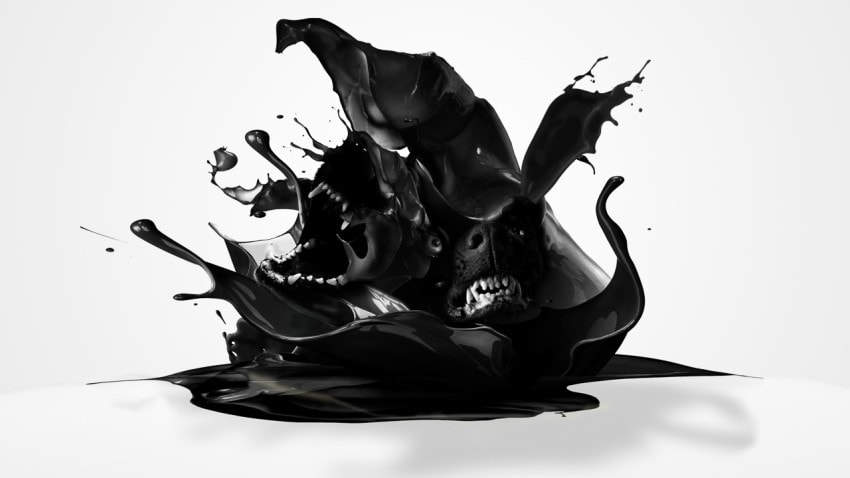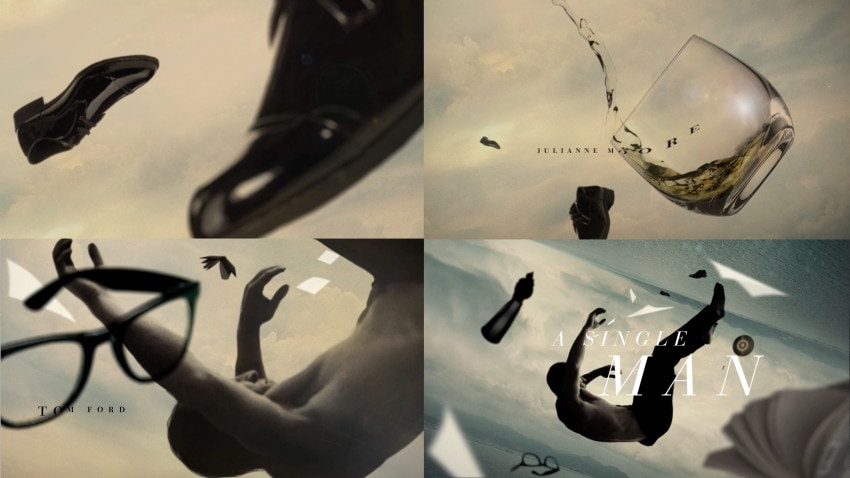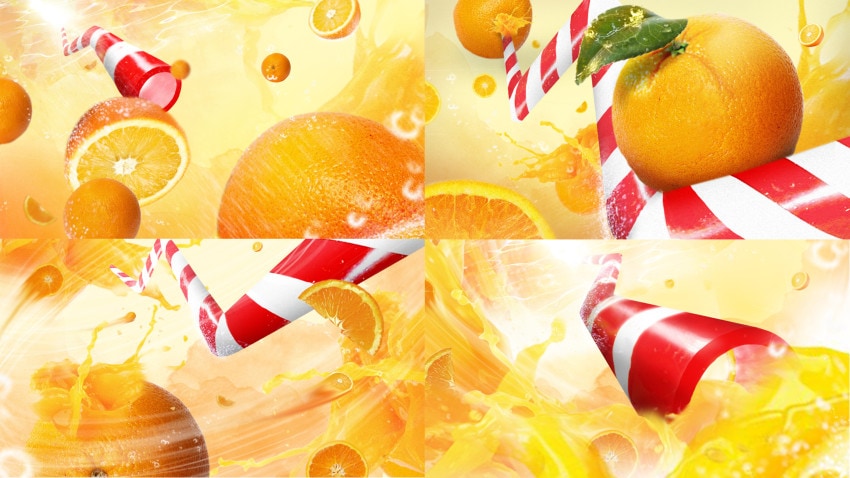Editor’s note: This is part of a series of school profiles on Motionographer. The following profile was compiled in late 2015.
Conceived by Walt Disney in 1960 and created through a merger of two older schools, CalArts is one of the nation’s leading institutions for the performing and visual arts.
Fun fact: Since 1985, the total box office revenue of films directed by alumni of CalArts’ Character and Experimental Animation Programs is over $30 billion dollars.
Despite that commercial success, CalArts identifies strongly as an art school, as our interview with Professor Michael Worthington below shows. That gives its motion graphics offerings a slightly different flavor than might be found in schools anchored in design.
At a Glance
| Location | Valencia, California (about 40 minutes from Los Angeles) |
| School Population | 1,500 |
| Graphic Design Program Population | 15-20 per year BFA, 10-12 MFA |
| Chair/Department Head (Motion Specialization) | Michael Worthington |
| Programs of Study | BFA in Graphic Design MFA in Graphic Design Motion Graphics Specialization (MFA only) |
| Average Undergraduate Tuition & Fees | Tuition $43,400 Housing $6,100 to $8,900 Other fees $600 |
Q&A with Michael Worthington, Graphic Design Faculty
Why would a student choose CalArts over another institution?
In terms of an individual program, I think it’s all about a student finding the right fit, finding the right place for the individual. There are plenty of great motion programs in the world, but they are all different, and they are each the best program for certain students. They each produce a certain kind of student (for the most part).
CalArts is an art school. not a design school, not a university. It has hippy left-wing experimental craziness in its DNA. It’s very loose and very informal. In many ways, you have to embrace that to get the most out of the institution.

Style frames by Angie Son
One thing that is quite different about CalArts is that it is a real multidisciplinary institute. It has an amazing film school, with a world-renowned animation program, but it also has schools of dance, theatre, and music.
So there is this amazing intersection of disciplines and knowledge and talent and resources. That’s great for motion graphics students, since they can utilizes classes and the expertise of faculty and fellow students in all these different disciplines.
It’s a very immersive educational experience. We have very small class sizes, and all students have studio spaces with 24 hour access to their studios and equipment labs.
Can you explain CalArts’s approach to motion design education?
Concept, form, design and narrative are prioritized. Technology is left mostly behind the scenes.
We deliberately focus on these areas to avoid the “tech trap,” where you end up being a slave to the programs you use. Software is made to be learnt; our job is to teach designers who are exceptional thinkers and makers, so this is where we place our emphasis.

Illustration by Jaime Van Wart
In many ways, we are aesthetically agnostic. We embrace the idea that designers need to work in different ways and the concept of “good design” is entirely contextual: what works for one project might not work for another.
In general, we take a critical approach to everything. We are always questioning design and taking design apart so we can understand how it works, understand whats wrong with it, and understand how to fix it.
What does CalArts look for in faculty?
We have a really small full-time faculty, so we look for faculty that have a range of design skills across multiple disciplines — as well as being great teachers!

Style frame by Sean Kasa
We hire a lot of professionals to teach one class, which is a deliberate strategy to involve professionals in the motion industry who might not be able to commit to more than one class a week. It really helps being close to LA as a motion industry hub, for both visiting faculty as well as guest lecturers and internships.
What’s an area that you’re currently working to improve at CalArts?
We’ve spent the last two years creating an MFA Motion Specialization. The next step is to do the same at the BFA level.
We’re going to create a structure where students spend two years learning all the fundamental graphic design skills necessary to work in motion and then spend the next two years focusing on motion work.

Style frames by Angie Son
At its core, we are trying to create specialists who also have a wide range of skills that allow them to also be generalists — and be very nimble in the commercial marketplace, adapting to change and developing as leaders in the field.
What kinds of students do best at CalArts?
Energetic, enthusiastic, self-motivated, fast learners, idiosyncratic aesthetes, verbal and visual adventurers, risk takers, those who are smart and vocal with a critical eye for their own work and the work of others.

Type project by Jaime Van Wart
Having technical, formal and typographical skills helps, but we can teach those things. Raw intelligence and criticality and an adventurous side matter more at the start.
Above all, the students that do best are those that are committed to design and who are willing to put the time and energy into their own development and learning.
Where do you see the future of motion design headed, and how is CalArts preparing students for that trajectory?
In academic terms, I think the big change is that culture at large is acknowledging motion as its own discipline and academia’s job will be to further its history, theory and challenge contemporary practice.

Style frames by Angie Son
It sounds a little pompous, but I see academia as having the job of intellectualizing motion, of educating it, making it smarter both inside and out (makers and audience). For instance, we now have a dedicated History of Motion class, because — apart from Michael Betancourt’s book — there isn’t really any critical history for motion graphics
At the MFA level, this means more theoretical and questioning projects. In some ways, it’s sbout making motion graphics about motion graphics!
With the BFAs, we are much more focused on preparing students to go into industry. At that younger age, they all want to make with abandon. They are all energetic makers more than critical thinkers).
But increasingly we are also challenging them to have a dual role, to be the next generation who will catalogue and define and question motion as a practice — as well as going out into the commercial world and changing practice.
Student Perspectives
Angie Son (BFA 2014)
The motion graphics department at CalArts is very intimate. My CalArts peers are like my family, and with the school being so small and having so many different creative avenues for inspiration, it allows for collaborative opportunities beyond just the Motion Graphics or Graphic Design departments.
The professors are very dedicated and will go beyond class hours to help students develop their ideas. I loved that both the undergrad and the graduate students get their own designated studio spaces, which allowed me to learn a lot from my classmates and push my project more than I would have on my own. The department encourages a lot of experimentation, collaboration, and creative thinking which help shape projects in delightfully intriguing and thought provoking ways.
CalArt’s education has been invaluable in teaching me how to ask the right questions and come up with insightful metaphors and compelling ideas that make my projects more meaningful. I think the most important aspect of the program is just that: teaching students to be better problem solvers, thinkers, and storytellers.
Angie Bac (BFA 2015)
Motion design at CalArts is a special and vibrant program, with an emphasis on typography and letterforms. The program bridges the gap between traditional graphic design and motion design, creating a new realm that students can experiment in.
I was constantly inspired by my peers and my professors to push my limits and keep inventing make beautiful things, make bold things, make delicate things, make ugly things, make anything; the process is as important as the outcome.
CalArts’ graphic design program is unique, because it teaches you how to think as much as, if not more than, it does to make. The motion program plays a significant role in this practice because it focuses on the making aspect, requiring students to get out of their comfort zones to learn software, techniques, and alternate ways of creating that are foreign or avant-garde.
Naturally, this process can become overwhelming, but the sense of community amongst students and professors is strong and leads to both amazing motion design as well as amazing friendships.
Sean Kasa (MFA 2016)
The Motion Graphics program at CalArts opened so many doors for me, pushed me into creative avenues that I would never have explored and made me realize that my vision of motion graphics was incredibly narrow.
I have been able to bond with faculty and peers, allowing for creative freedom across a broad spectrum of new and experimental ways of making and thinking about time-based design. By diving feet first into the wealth of influences that CalArts has to offer, I have been able to focus my abilities on new levels that I never would have been able achieve on my own.
This drive amongst all of my peers has created an atmosphere that carries on after graduation, as CalArts creates a sense of camaraderie amongst its alums. The Calarts Motion Graphics program is an incredibly special and I am thankful for every minute of it.
Jaime Van Wart (MFA 2016)
The Motion Graphics MFA program has been the most challenging but rewarding experience of my life.
I was trudging through a frustrating corporate job when I decided to redirect my career and take a chance on something I knew very little about. A year and a half later, I’m designing and animating films, recognizing how much I still have to learn, but looking forward to a future filled with possibilities.
The curriculum is special in that it immerses us in both commercial and experimental practices and encourages us to develop critical perspectives toward design. We are becoming not just skilled practitioners, but also creative storytellers with independent voices and methodologies.
I’ve learned more than I ever anticipated, but the thing I’m most grateful for is the community. The faculty, visiting designers, and the CalArts students and alumni are a family that supports each other through school and beyond. Every interaction is an opportunity to connect, learn, and help one another.




